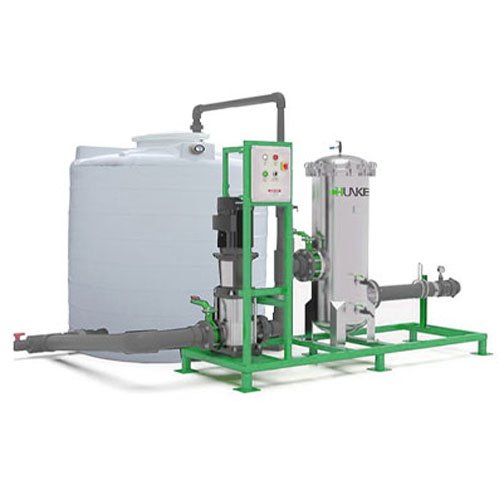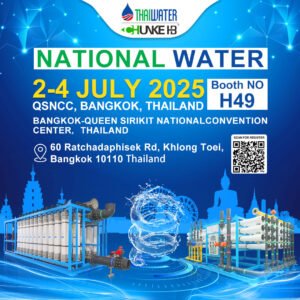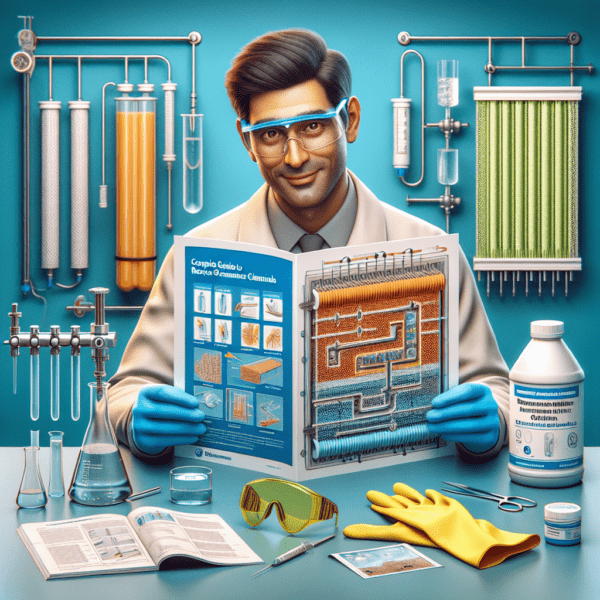
Maintaining the efficiency and longevity of reverse osmosis (RO) systems is paramount, demanding regular RO membrane cleaning techniques to ensure operational efficiency. For optimal results, incorporating a broad spectrum of reverse osmosis chemicals, including both high and low pH cleaning solutions, is crucial1. As a field with considerable nuances, the application of reverse osmosis membrane cleaning chemicals, antiscalants, and biocides requires professional expertise to navigate effectively2. At Chunke Water Treatment, we bring over 15 years of experience in designing cutting-edge RO, ultrafiltration systems, and electrodeionization systems. Our focus is on crafting water treatment solutions that are not only energy-efficient but also promote long membrane life, emphasizing the importance of strategic membrane maintenance within the industry3.
In this article, we will explore various RO membrane cleaning techniques, ranging from chemical cleaning methods incorporating RO chemicals, CIP (Clean in Place) chemicals, to physical cleaning techniques. We also delve into preventative maintenance and best practices that include regular microbiological testing and membrane autopsy to ensure your systems operate at peak performance. Through this comprehensive guide, we aim to equip you with the knowledge and tools necessary to manage your water purification systems efficiently, ensuring the longevity of your industrial reverse osmosis equipment23.
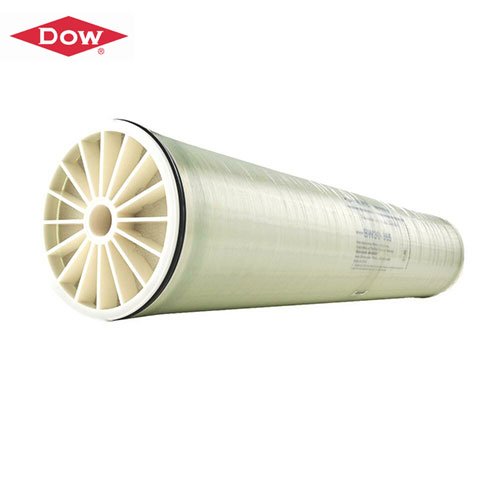
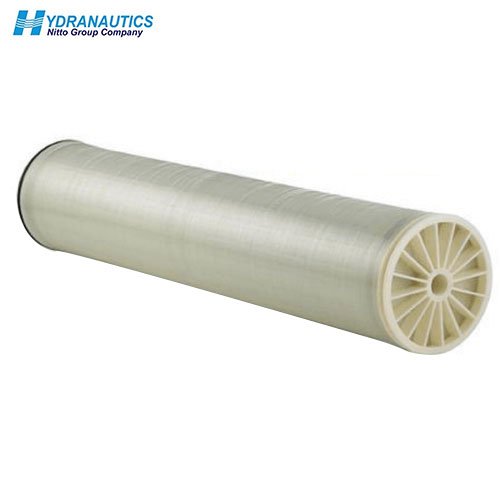
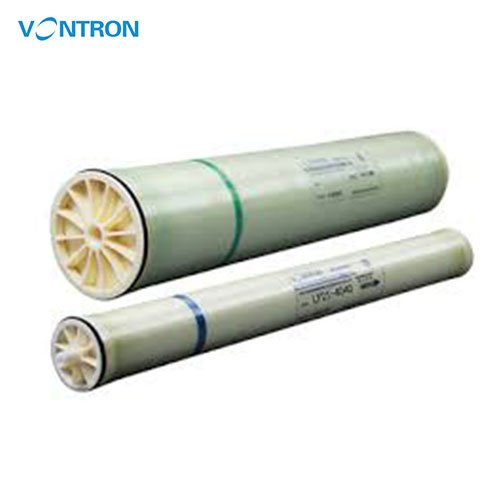
Identifying the Need for RO Membrane Cleaning
Key Indicators for RO Membrane Cleaning
Decreased Permeate Flow Rate
- Observation: A drop in permeate flow rate by 10-15%.
- Implication: This reduction suggests clogging or fouling of the RO membrane, indicating a need for cleaning 1.
Increased Differential Pressure
- Observation: A rise in differential pressure by 10-15%.
- Implication: Increased pressure differential typically signals membrane blockages requiring immediate attention 1.
Reduced Salt Rejection
- Observation: A decrease in salt rejection by 1-2%.
- Implication: This reduction is a clear sign of diminished membrane efficiency, necessitating a cleaning process 1.
Poor Water Quality
- Observation: Noticeable decline in the quality of permeate water.
- Implication: Such deterioration often results from membrane fouling or scaling, impacting overall system performance 2.
Presence of Odors or Mold
- Observation: Unusual smells or visible mold on the membrane.
- Implication: These are symptoms of biological growth on the membranes, which can be controlled by temperature adjustments and biocide application 2.
Visible Build-Up on Membrane Edges
- Observation: Accumulation of solids at the membrane edges.
- Implication: Identifying the composition of this build-up is crucial as it helps in selecting the appropriate cleaning method, such as CIP or specific chemical treatments 2.
System Performance Metrics
- Normalized Flux: Cleaning is required if there’s a decrease of 10-15% in normalized flux 3.
- Salt Content: An increase of 10% in normalized salt content in the permeate suggests the need for cleaning 3.
- Pressure Gradient: A decrease of 15% in pressure gradient within a pressure vessel is a critical indicator for membrane cleaning 3.
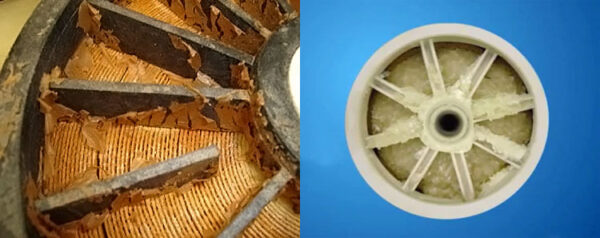
Regular Cleaning Necessity
- Conditions for Cleaning: Regular cleaning should be considered if any of the following occurs: a 10-15% drop in permeate flow rate, an increase in water supply pressure needed to maintain normal flow, a 10-15% rise in salt permeability of water, or a 10-15% increase in membrane pressure difference. These indicators, along with confirmed scaling or contamination, underscore the importance of timely maintenance to prevent long-term damage and maintain system efficiency 4.
At Chunke Water Treatment, our extensive experience in designing and manufacturing energy-efficient water treatment systems with prolonged membrane life highlights the critical nature of recognizing these indicators for timely and effective cleaning. This proactive approach ensures optimal performance and longevity of RO systems.
Chemical Cleaning Methods
Step-by-Step Procedure for Chemical Cleaning of RO Membranes
Preparation and Inspection
- Inspect Cleaning Tank and Accessories: Begin by inspecting the cleaning tank, hoses, and cartridge filters for any damage or contamination to ensure they are in optimal condition for use5.
- Prepare Cleaning Solution: Fill the cleaning tank with RO permeate or deionized (DI) water, which should be used to configure the cleaning solution. Ensure the solution does not exceed a temperature of 40°C and a pressure of 0.35Mpa45 for RO membrane cleaning techniques.
Adding Chemicals
- Add Cleaning Chemicals: Introduce the appropriate chemical cleaning agent. For removing biological or organic foulants, use high pH cleaning chemicals that can chelate calcium and disperse biofilms5. If dealing with mineral scale, begin with low pH cleaners before proceeding to high pH solutions to prevent compaction of organic foulants into the membrane5.
Cleaning Process
- Circulate the Cleaning Solution: Circulate the solution through one stage at a time to maintain maximum flow velocity, which helps in effectively removing the contaminants from the membrane surfaces5.
- Monitor Solution Parameters: Regularly check the solution temperature and pH during the circulation process to ensure they remain within the recommended ranges5 for RO membrane cleaning techniques.
Rinsing and Finishing
- Rinse with RO Permeate: After the chemical cleaning cycle, thoroughly rinse the system with RO permeate to remove any residual cleaning chemicals5.
- Return System to Service: Finally, ensure the system is properly rinsed and prepare it for returning to normal operation5 for RO membrane cleaning techniques.
Safety and Handling
- Wear Protective Equipment: Always wear appropriate safety gear such as goggles, rubber gloves, masks, and rubber aprons when handling chemicals to protect against potential hazards4.
- Handle Chemicals with Care: Be cautious when mixing and using cleaning chemicals, as improper handling can lead to accidents or damage to the RO membranes4.
Using Specialized Chemicals
- Avista Cleaning Chemicals: For efficient and cost-effective cleaning, consider using specialized chemicals like Vitec antiscalants, RoClean cleaners, and Avista biocides, which are formulated to tackle specific types of contamination found in RO systems3.
By following these detailed steps and utilizing specialized cleaning chemicals, operators at Chunke Water Treatment ensure the longevity and efficiency of RO systems, reflecting our commitment to designing systems that require less energy and maintain long membrane life. This approach not only protects the equipment but also optimizes operational efficiency, which is crucial for maintaining the high performance of water treatment systems3.
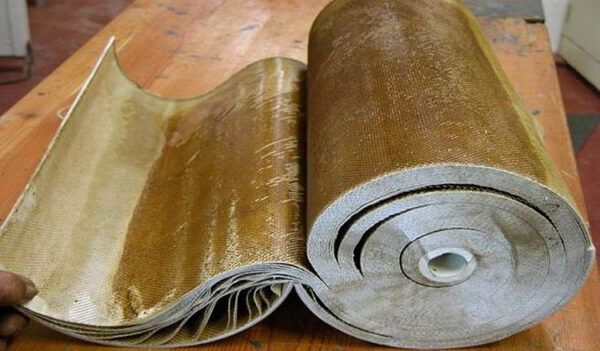
Physical Cleaning Techniques
Reverse Flushing Technique
- Initiate Reverse Flushing: This involves flushing water from the outside of the membrane to the inside in a reverse direction, effectively dislodging end scaling and other insoluble deposits6.
- Follow with Isobaric Hydraulic Flushing: Increase the flow rate to enhance the cleaning effect, ensuring that all loosened particles are removed from the membrane surfaces6.
Hot Water Flushing
Water-Gas Mixing Technique
External Pressure Ultrafiltration Membrane Backwash
- Conduct Backwash: Simultaneously with water-gas mixing, perform an external pressure ultrafiltration membrane backwash to enhance the overall cleaning efficacy7.
Mechanical Scouring Methods
- Implement Techniques: Use methods like turbulence, vibration, gas-water mixing, and ultrasonic waves to mechanically remove pollutants from the membrane surface4.
- Monitor Effects: Carefully observe the membrane’s response to prevent potential damage and ensure effective RO membrane cleaning techniques4.
Manual Cleaning: Hand Scrubbing
Isobaric Hydraulic Flushing for Ultra-Filtration
Backwash Flushing Method
- Directional Flushing: Perform the flushing from the back (porous support layer) to the front (dense layer) of the membrane to effectively clear blockages and restore function8.
By incorporating these physical cleaning techniques, we at Chunke Water Treatment leverage our extensive experience to design systems that are not only energy-efficient but also maintain long membrane life. These methods are crucial for ensuring the operational efficiency and longevity of our advanced reverse osmosis and ultrafiltration systems.
Preventative Maintenance and Best Practices
Regular Maintenance Schedule
- Filter Replacements: To prevent clogging and maintain system efficiency, replace sediment and carbon filters every 6 to 12 months. This regular change protects the RO membrane and ensures clean, safe water production 9101112.
- Annual System Sanitization: Clean and sanitize the entire system annually to prevent microbial growth and maintain water quality. This includes the RO storage tank, which should be sanitized every other year to eliminate any potential slime buildup 91011.
- Membrane Inspection and Replacement: Conduct a detailed inspection of the RO membrane every 7 to 8 months, and replace it based on water quality and TDS meter readings. For hard water, replace every 2 to 3 years; for soft water, every 5 to 7 years 411.
- Drain Storage Tank Regularly: To maintain water quality, drain the RO storage tank every two weeks and replace the water. This simple step is crucial in ensuring the longevity and effectiveness of the water purification process 1011.
Optimizing Membrane Performance
- Scheduled Membrane Cleaning: Implement a membrane cleaning protocol that includes the production of cleaning fluid, removal of feed water, low-flow recirculation, soaking, and thorough rinsing. Clean each stage individually for optimal results, which will extend membrane life, lower operating pressures, and improve product quality 53.
- Pre-Cleaning Inspection: Before starting the cleaning process, inspect all system components such as the cleaning tank, hoses, and filters for any signs of wear or contamination 5.
Strategic Component Replacement
- Sediment Carbon Prefilter: Replace this component annually, or more frequently in areas with high chlorine rates, to protect the membrane and ensure efficient operation 11.
- Postfilter Replacement: Ensure the postfilter is replaced annually to maintain the quality of water leaving the storage tank 11.
System Efficiency and Longevity
- Scheduled Downtime for Maintenance: Perform system maintenance during scheduled downtimes or before medium to long-term shutdowns. This proactive approach helps in identifying issues before they cause significant damage, thus reducing system downtime and saving on costly repairs 12.
- Preventative Maintenance: Regular preventative maintenance is key to efficient operation and peak performance of RO systems. This not only prolongs the system’s lifespan but also saves money by avoiding expensive repairs 13.
Best Practices for Long Membrane Life
- Use of High-Quality Components: At Chunke Water Treatment, we emphasize the use of high-quality components in our RO, ultrafiltration, and electrodeionization systems. This commitment ensures our systems operate with minimal energy consumption and maximize membrane lifespan 39.
- Professional Expertise: Leverage our over 15 years of experience in designing and manufacturing water treatment systems. Our expertise ensures that each maintenance activity is performed with precision, further enhancing the longevity and efficiency of the systems 3.
Conclusion
Through the exploration of various reverse osmosis membrane cleaning techniques, we’ve highlighted the paramount importance of regular maintenance, the use of specialized chemicals, and the effectiveness of physical cleaning methods to ensure the operational efficiency and longevity of RO systems. At Chunke Water Treatment, leveraging our over 15 years of experience, we’ve provided comprehensive insights into designing and manufacturing energy-efficient water treatment systems that significantly enhance membrane life. This guide serves as a testament to our commitment to excellence in the water treatment industry, aiming to empower users with the requisite knowledge to optimize their water purification processes for sustainability and efficiency.
Understanding the indicators for RO membrane cleaning, coupled with adhering to the outlined preventative maintenance and best practices, constitutes a proactive approach to managing water treatment systems. It is imperative for professionals in the field to recognize the critical nature of timely and effective maintenance, thereby ensuring that systems retain their optimal performance over an extended period. To get more information, please feel free our contact form or send email to us: info@chunkewatertreatment.com. As we continue to strive for innovation and efficiency at Chunke Water Treatment, our enduring objective is to support our clients in navigating the complexities of water treatment with state-of-the-art solutions that minimize energy usage while maximizing membrane lifespan.
FAQs
What are the top recommended chemicals for cleaning RO membranes?
For optimal cleaning of Reverse Osmosis (RO) membranes, consider using these chemicals:
- AMI Antiscalant for Reverse Osmosis Systems
- Flocon 135 Antiscalant for RO Systems
- Flocon 260 Premium Antiscalant & Antifoulant for RO Systems
- Flocon 190 Antiscalant for RO Systems
- Flocon Plus N Antiscalant for Seawater RO Systems
How can I clean my RO membrane effectively?
To clean your Reverse Osmosis membrane, you might use:
- RoClean L211 for membranes with organic matter fouling
- RoQuest 3000 Organic Liquid Coagulant from Avista
- Titan Antifouling for Reverse Osmosis Membranes
- RoClean P112 Membrane Cleaner for Silica SiO2
- RoClean P303 Calcium Carbonate & Metal Scale Cleaner
Which cleaning agents are used during the RO membrane cleaning process?
The cleaning process for RO membranes often involves soaking the membranes in a solution of either chlorine bleach, hydrochloric acid, or hydrogen peroxide. After soaking for a set period, a forward flush or backward flush is conducted to rinse out contaminants.
What is the recommended frequency for flushing an RO membrane?
It is advisable to flush the RO membrane at the end of each workday at a minimum. However, flushing it after every use is even better to prevent mold growth and blockages.
References
[2] – https://www.dupont.com/knowledge/signs-of-membrane-fouling-and-when-to-clean-them.html
[3] – https://avistamembranesolutions.com/resources/membrane-cip-clean-in-place-a-complete-guide/
[4] – https://www.simpurelife.com/blogs/blogs/how-to-clean-flush-wash-ro-membrane
[5] – https://complete-water.com/resources/cleaning-ro-membranes
[6] – https://membranes.com/wp-content/uploads/Documents/Technical-Papers/Application/Waste/METHODS-FOR-ENHANCED-CLEANING-OF-FOULED-RO-ELEMENTS-1.pdf
[7] – https://www.linkedin.com/pulse/have-you-learned-three-physical-cleaning-methods-reverse-alice-chi?trk=article-ssr-frontend-pulse_more-articles_related-content-card
[8] – https://www.linkedin.com/pulse/2-ways-clean-ro-membrane-effectively-chen-ro-water-treatment-plant
[9] – https://www.espwaterproducts.com/reverse-osmosis-maintenance/
[10] – https://www.freshwatersystems.com/blogs/blog/3-tips-to-help-maintain-your-reverse-osmosis-system
[11] – https://www.youtube.com/watch?v=zTWUCHjZQp0
[12] – https://blog.watertech.com/how-to-maintain-a-reverse-osmosis-system/
[13] – https://complete-water.com/resources/how-to-maintain-industrial-reverse-osmosis-systems

